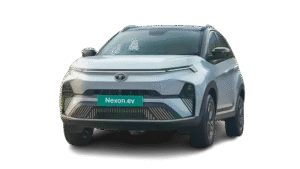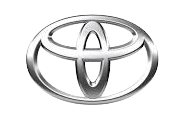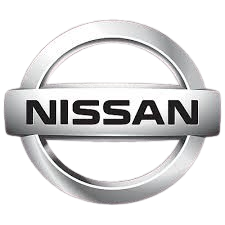AboutTata Motors Free Full Details 2025
Tata Motors

About Tata Motors
Founded: Tata Motors traces its origins to the Tata Group, started by Jamsetji Nusserwanji Tata in 1868. The Tata Group initially dealt with textiles, steel, and hospitality, and later expanded into heavy industries.
Year 1945, Tata Engineering and
Establishment of TELCO
Tata Engineering and Locomotive Co. Ltd. (TELCO) Production of steam locomotives and engineering equipment.Jamshedpur, India. India was still under British rule, so this move was significant in preparing for self-reliance in heavy industries.
Automobile Manufacturing
1954 Partnership: TELCO signed a deal with Daimler-Benz AG (Germany) to manufacture commercial vehicles (mainly trucks).First Vehicle Produced: A Mercedes-Benz truck assembled in India. This partnership lasted until 1969, after which Tata started making its own truck designs.
Expansion in Tata Motors In Commercial Vehicles
1960s–1970s: Focused heavily on trucks, buse s, and military vehicles for India.Established itself as one of the biggest CV (Commercial Vehicle) manufacturers in India.
s, and military vehicles for India.Established itself as one of the biggest CV (Commercial Vehicle) manufacturers in India.
Main Commercial Vehicles Hub
Explore the full lineup—trucks, buses, small trucks, and smart mobility solutions—on Tata Motors’ official commercial vehicles page:
Light Commercial Vehicle Success
1986: Launched Tata 407 (LCV) — one of India’s most successful light trucks, which became a market leader.
Dedicated Commercial Vehicles Site
For in-depth details, visit their specialized commercial portal with sections on Trucks, Small Trucks, Buses & Vans, and digital fleet tools.
Tata Motors Passenger Vehicle
1991, Tata introduced the Tata Sierra, India’s first domestically developed passenger SUV.It was unique but expensive, aimed more at premium buyers.
Internal Combustion Models:
Tiago – Compact, urban-friendly hatchback (A-segment).
Altroz – Stylish subcompact hatchback (B-segment).
Tigor – Sedan option for those desiring a boot, reliable yet elegant.
Punch – Micro SUV, agile and efficient.
Nexon – Popular subcompact crossover SUV, strong road presence.
Curvv – Coupe-SUV, merging sportiness with SUV ruggedness.
Harrier – Mid-size crossover SUV with rich features.
Safari – Three-row SUV offering space and comfort.
Indigenous Car Breakthrough
1998: Launch of the Tata Indica, India’s first fully indigenous passenger car.Initially criticized, but after improvements, it became a sales hit.This was a landmark moment — proving India could design and build its own car.
Rebranding to Tata Motors
2003, TELCO officially changed its name to Tata Motors Limited, reflecting a broader vision for passenger, commercial, and global automotive markets.
Tata Motors’ electric vehicles

Tata Motors’ electric vehicle portfolio is robust and well-rounded—beginning with the ultrapopular Nexon EV, offering affordable city options with Tiago EV and Punch EV, moving up to longer-range and premium models like Curvv EV, and peaking with the luxurious Harrier EV. Plus, Tata’s strategic enhancements—such as a lifetime battery warranty and their Acti. EV platform—showcase serious confidence and vision in the e-mobility space.
Tata Motors Manufacturing Locations by State
Based on the most recent information, here are the key manufacturing facilities and their corresponding states:
Jharkhand (Jamshedpur): The flagship plant—Tata Motors’ very first—produces medium and heavy commercial vehicles (M&HCVs), engines, and supports major vehicle assembly.
Maharashtra (Pune – Pimpri & Chinchwad): A highly versatile and technologically advanced facility that manufactures both commercial and passenger vehicles, engines, defense vehicles, and houses India’s full vehicle crash test lab.
Uttar Pradesh (Lucknow): Specializes in commercial vehicle chassis, buses (including low-floor, CNG, rear-engine, and high-capacity systems), backed by engineering research infrastructure.
Uttarakhand (Pantnagar): Produces the Tata Ace minitruck family and related variants; features a large integrated vendor park and adherence to eco-friendly practices like zero liquid discharge.
Karnataka (Dharwad): Focused on small and light commercial vehicles, utility vehicles, M&HCVs, and electric buses. It’s the first IGBC Platinum-rated automotive plant in India.
Gujarat (Sanand – Chharodi): Originally built for the Nano, the plant now flexibly manufactures hatchbacks like Tiago, Tigor, and Tigor EV. It’s a zero-discharge facility and is among Tata’s most modern operations. Tamil Nadu (Panapakkam, Ranipet district): A greenfield facility announced in 2024, intended to produce next-gen cars and SUVs—including JLR models—powered entirely by renewable energy. Expected annual capacity: 250,000 vehicles.
CLICK HERE CHECK VACANCY














